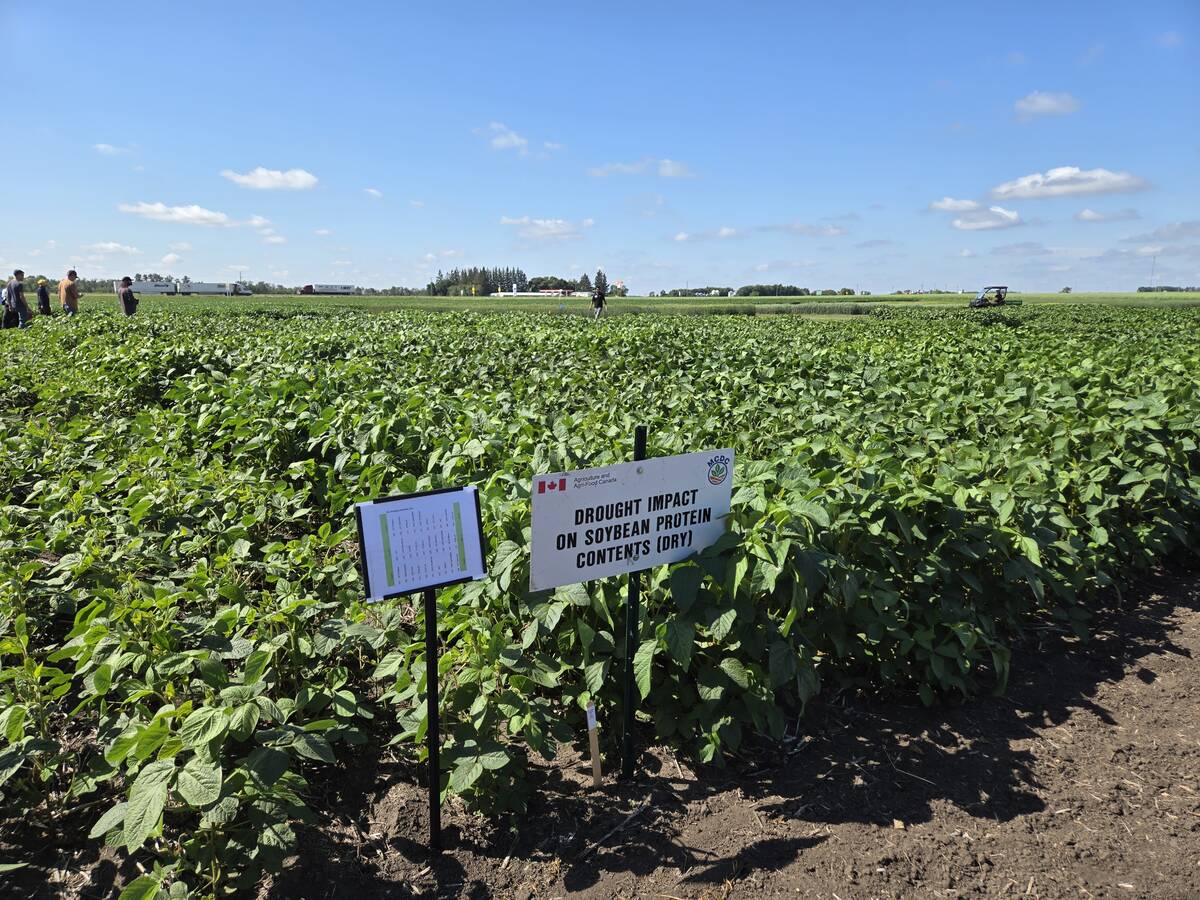Back in 1982, when she began trying to convince farmers that soybean products could be used for more than animal feed and vegetable oil, Barb Overlie was often laughed at.
“Most of your soybean growers are typical Midwesterners, and they tend to like meat and potatoes,” said Overlie, a Lake Crystal, Minnesota, farmer.
“All they knew was tofu, and they said, ‘we won’t eat that tofu.’ “
Now, with soy products common throughout grocery stores, convincing farmers to support soybean product research is an easier task.
Read Also

Carberry field day looks for agriculture solutions
Manitoba farmers explored research solutions for resilient crops, perpetual agronomic issues and new kinds of agricultural products at a field day at the Manitoba Crop Diversification Centre in Carberry on Aug. 6.
“There aren’t many who think it’s a bad idea,” said Overlie, a prominent American soybean grower. “We are just elated. It’s unbelievable. You can hardly pick up a product (in the grocery store) that doesn’t have some form of soy in it.”
Soybean products have caught and ridden a wave of consumer interest that has radically increased the humble bean’s profile.
Part of the success was good timing, Overlie said. Farmers’ interest in diversifying soybean markets grew at the same time that scientists were developing easy means to extract many specific substances from grains and oilseeds.
Then fear struck America when scientists and nutritionists blamed saturated meat and dairy fats for heart disease and other health problems. Substitutes for meat, such as soybean protein, suddenly gained popularity. The growing number of vegetarians also increased demand for non-meat protein sources.
But one of the biggest marketing victories for soybeans was the United States Food and Drug Administration’s approval of a health claim for soy protein. That allowed marketers to claim that eating a certain amount of soy per day could reduce the chances of developing heart disease.
Getting this health claim in 1999 was neither good timing nor luck, Overlie said. It was the result of years of human health studies and product development, partially paid for by farmer check-off dollars.
Overlie said she learned to appreciate the difficulties companies face when trying to make nutraceutical claims.
“Food studies are not as cut and dried (as crop research studies),” said Overlie.
“It takes years, with large groups of people. It becomes frustrating. It’s hard to wait that long.”
But with the sale of soybean-based products other than oil and meal now in the billions of dollars per year, the effort seems worth it to most farmers. But not to all.
Overlie said some of the anti-tofu types are sticking to their bias.
“We still have a few that don’t believe in it, but they’re the type that won’t believe in anything,” said Overlie.















